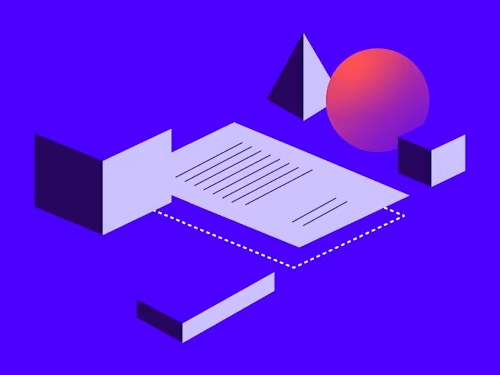
How a Legal Operations Pro Streamlines the Contract Process
Dive deeper into the responsibilities of a legal operations professional and how they drive positive business outcomes.

Contracts and agreements formalise relationships between two or more parties, so they’re an essential part of any business. Contract management—including drafting, negotiating, revising, approving and signing—is a key function of corporate legal teams, and the longer it takes to get a contract signed, the longer it takes to receive revenue. That’s where legal ops comes in.
While we’re technically part of the legal team, we work to simplify operational processes and manage projects company-wide, so we need to speak the language of almost every department—from human resources to sales, IT and more.
Specifically, I’m responsible for enabling the legal team to deliver consistently efficient and effective legal services by supporting internal teams, managing vendors and building contract workflows. Let’s dive deeper into each of these responsibilities and how they drive positive business outcomes.
Priority 1: Help people do their best work
Our research shows that 58% of organisations find negotiations the most frustrating contract management step—with the average contract going through three or more new versions before it’s signed. With this in mind, we partner closely with our global contracts team within the legal department to speed up processes for our finance, sales and HR colleagues.
Effortlessly manage agreements
On average, contracts can go through three to four versions and take over 30 hours to draft, review and approve before they’re finally signed. It’d be nearly impossible to keep track of every change and version without a contract lifecycle management (CLM) tool. We use Docusign CLM as our single source of truth for all kinds of contracts and agreements, including:
Master service agreements (MSAs)
Non-disclosure agreements (NDAs)
Statements of work (SOWs)
Change orders (COs)
Negotiating an MSA used to take hours of back and forth with legal, sales and the customer. We’d have to pay close attention to make sure we have the correct version of the agreement and if we’re catching what the other party redlined.
Now, a sales team member kicks off a task in the CLM tool, and our global contracts team can get to work. The platform ensures we’re looking at the right contract version, automatically tracking changes and notifying the next person in the routing journey.
Track the entire contract lifecycle
With contract management software, we get visibility into every stage of the contract process. We can easily monitor each step: from when the contract is submitted, to legal reviews, right through to when it’s sent back to the customer. We’re in full control—without anyone having to upload or route anything manually.
Since everything is saved in one searchable repository by default, finding important terms or reminding customers about renewals takes less time. No more searching email inboxes or digging through piles of paper.
Get organised with artificial intelligence
Artificial intelligence (AI) is a hot topic these days because it has so many potential applications. At Docusign, it’s already saving us time in our workflows.
When we have to wade through contracts to tag them with metadata, AI is the ace up our sleeve. Our team uses it to find and record information like when the contract was signed, when it's up for renewal and the parties’ names.
We’ve seen how AI speeds up legal service delivery and can’t wait to see what else it can do. Right now, we’re building out new AI features that’ll be coming soon.
Priority 2: Bring vendors on board
Another part of my day is vendor management. Whenever we need a new software subscription or an outside law firm, I’m in charge of onboarding and approvals.
Docusign eSignature streamlines the whole process of working with independent software vendors, resellers and distributors, while our ServiceNow integration tracks vendor onboarding through a ticketing process. Once all the necessary internal tasks have been completed, it automatically sends an envelope with the contract for a convenient electronic signature.
At the same time, I send out a finance form that asks vendors to input their financial information. When everything is approved and signed, the vendor is already set up in accounts payable from the start—making it quick and simple to pay them.
Just this morning, I sent a contract with an SOW to renew one of our subscriptions. It’ll go through the vendor contract process, get signed by the right people and get saved in a repository. It’s as easy as that.
Priority 3: Build workflows and test new products and features
Most departments at Docusign use our solutions in some way, and we have eyes on all of them. That means my teammates and I have full visibility into the workflows people at Docusign are using to make agreements and act on them. This information serves as valuable, always-accessible product research for us. We let our product teams know what’s working from a user or process builder’s perspective and ask how we can improve the experience.
To further tweak and refine our products, we work with IT to prioritise new initiatives and test requirements as they’re being built. Basically, we make sure new features will work as they’re supposed to for our team and our customers.
Some of our successes include:
Facilitating compliant early access programs
After internal feedback, we invite select customers into an “early access” program before rolling out any new features. As you might guess, making sure customers understand the terms of an early access program is crucial to avoid legal risk.
To make this work, I built a workflow that includes a program schedule and an addendum document laying out the terms of participation. Product managers can access simple eSignature templates with all the relevant information, so they don’t have to search for old contracts or draw up a document from scratch every time.
The best part is that it makes the overall customer experience consistent and easy. If a customer is already in our system and we’d like them to participate in another beta program, we have their information ready to go. They've signed the addendum, so all they need to do is sign the new schedule.
Reporting on our legal queue
Easing collaboration, reducing frustration and streamlining workflows are essential parts of my job—but it’s critical for me to also analyse and report on how that’s working so we can constantly improve. It’s my job to look at contracts through a business lens and ask questions like:
How many large contracts are we signing?
What regions do the contracts come from?
How much time is spent on high-value versus low-value contracts?
Without our CLM software, we’d be trying to get this data manually. Instead, our Salesforce integration seamlessly extracts the information we need to pull reports and support future decisions.
For example, I can build a report that tells me how many contract documents are sitting in the legal queue. I can collect data points about our weekly contract volume or how many contracts each team member handles. This helps us decide when to hire more staff, set SLAs and make decisions that improve everything from customer experience to employee morale.
If you’re using a tool that’s not built specifically for contracts, you won’t have everything at your fingertips. Say someone needs to review a contract, but they’re on vacation. That contract could sit in their email inbox for weeks before anyone realises it.
With a contract lifecycle management platform, you can streamline workflows and impress your partners.
Here’s what seasoned legal ops pros love about Docusign
My job would be much harder without contract management and electronic signature software. My aim is to simplify how we collaborate with each other and do business with our vendors, partners and customers. Using Docusign CLM and eSignature means we can turn around contracts so much faster while still maintaining quality. This is a total game changer if you want to:
Speed up the contract timeline
Break down internal company silos
Reduce the risk of losing or mishandling contracts
Uncover data and drive business decisions
If you’ve worked in a legal department for a while, you know that time is immensely valuable, so anything that removes barriers and gives legal teams their time back is critical to the overall success of the business.
Learn more about contract lifecycle management.
Related posts

- Team SolutionsUpdated 11 Feb 2025
Drive Security, Scalability and Oversight with Docusign

- Team SolutionsUpdated 31 Jan 2025
The customer experience disconnect: Are you missing the mark?

Drive Security, Scalability and Oversight with Docusign

The customer experience disconnect: Are you missing the mark?

Discover what's new with Docusign IAM or start with eSignature for free
